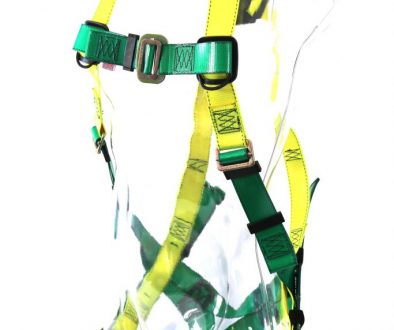The 4 Methods of Fall Protection
The leading cause of fatal employee injuries in the construction industry is falls. For this reason, the Occupational Safety and Health Administration (OSHA) requires workplaces that perform work in or around elevated locations to establish and implement a fall protection or fall safety program. It should work to eliminate the risk of falls and/or minimize the risk of injury if one does occur.
Fall protection systems can be classified into two main categories: passive or active. Passive fall protection systems do not require any further action from human workers once installed. They prevent falls and injuries whether or not an employee actively thinks about them. Examples include guard rails and netting. On the other hand, active fall protection systems require active participation from human workers. Employees must choose to use them and know how to use them properly. A common example is a fall arrest system or a fall restraint system.
Whether you’re looking for passive or active fall protection systems, the experts at Webb-Rite Safety have got you covered. We are an industry-leading manufacturer and distributor of fall protection equipment and systems. Our extensive selection of products, combined with our custom solution capabilities, enables us to meet virtually any fall protection need.
Below, we highlight the four ways these products can protect against falls.
What Are the Main Methods of Fall Protection?
In addition to being classified as active or passive systems, fall protection systems can be grouped into four broad categories based on how they protect employees against falls or fall injuries.
1. Fall Elimination
Ideally, employers should look for ways to eliminate the risk of falling. Typically, this involves avoiding working at elevated heights and/or preventing employees from working in areas with fall hazards. For example, equipment can be moved to a lower location to make it easier for employees to perform maintenance and repairs without using a ladder or lift. However, this solution is not always practical or possible, depending on the work being performed.
2. Fall Prevention
If working in elevated locations is unavoidable, the best way to protect workers from fall injuries is to prevent them from falling in the first place. Both passive (e.g., guardrails and toe board) and active (e.g. safety harnesses) systems can be used for this purpose. In addition to installing this equipment in and around elevated locations and over open holes and dangerous machinery, OSHA requires workplaces to do the following:
- Minimize the amount known dangers in the workspace
- Keep work areas clean, clear, and dry
- Train employees on how to identify fall hazards and how to use fall protection equipment
3. Fall Arrest
Fall arrest systems are a form of active fall protection; they are designed to stop an employee from hitting a lower surface after they’ve fallen. They typically consist of a harness, a safety lanyard or self-retracting lifeline, and a single or multiple anchor points.
4. Fall Restraint
Fall restraint systems are another form of active fall protection. While they have similar components to fall arrest systems, they have a different function. Rather than stopping a fall after it has occurred, they stop a fall from occurring in the first place. They typically accomplish this by having a shorter lanyard or lifeline that prevents the employee from getting close to edges or gaps within the elevated location.
Fall Protection Systems for the Construction Industry
In the construction industry, there are four types of active fall protection systems that are commonly employed:
- Fall Arrest Systems. These systems are used when there is a risk of workers falling 6 feet or more from a working/walking surface. Certain exceptions apply, such as when workers are climbing ladders, scaffolding, or steelwork.
- Positioning Systems. These systems are commonly used in conjunction with fall arrest systems by workers on ladders. While they do not prevent falls from occurring by themselves, they enable employees to perform work with both of their hands.
- Retrieval Systems. These systems are used to retrieve a worker after they have fallen.
- Suspension Systems. These systems are used to lower and support workers to otherwise unreachable elevated areas. When used with fall arrest systems, they allow workers to complete the necessary work with both hands safely.
Fall Protection Solutions at Webb-Rite Safety
Fall protection systems are essential pieces of equipment for many work environments, especially those found in the construction industry. There are numerous types available, each of which prevents falls and fall injuries in different ways.
Looking for durable and reliable safety equipment for your workplace? Trust in the experts at Webb-Rite Safety. We offer a broad range of fall protection equipment and systems as well as customized solutions for highly specific or unique applications. Additionally, we provide training programs to show your employees how to use the equipment properly and inspection and recertification services to keep your equipment in compliance.
To learn more about our fall protection products and services, schedule a training session, or book an inspection/recertification appointment, contact us today.

